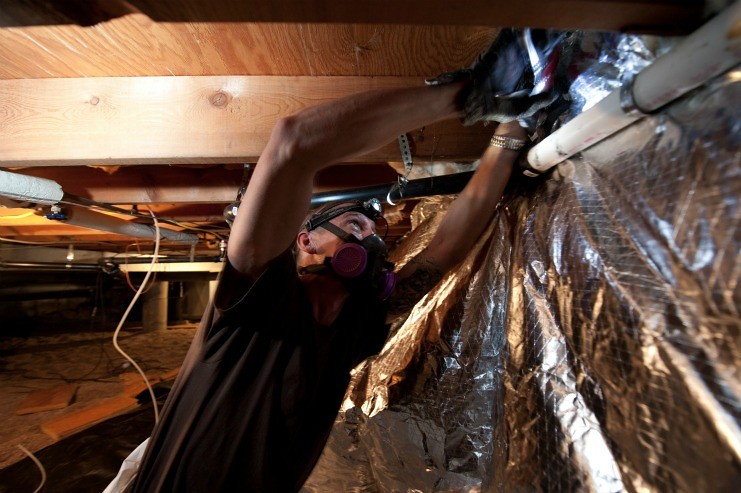The dreaded summer doldrums…here in Central Texas, they started a bit earlier than normal, with 100° plus temperatures hitting us all square in the face in early June. The Texas grid, as noted by ERCOT, hit multiple records through the month, with more than 78,000 megawatts being consumed by utility customers on one scorching hot July day. Couple that with rising inflation, no end in sight for sky-high fuel prices, and it is all adding up to an expensive and for some, crippling combination that could have long-term financial impacts.
As SPEER has been touting for over a decade, the need for energy efficiency is more critical than ever in dealing with an increasingly less reliable electric grid in Texas and the loss of disposable income for many as well as the overarching desire to stay comfortable on the hottest, and now coldest, days of the year. How does efficiency impact all these factors?
Energy Efficiency (EE) is a FORCE MULTIPLIER! EE helps in all aspects of energy resiliency. During the hottest and coldest days of the year, EE products and measures help alleviate peak period energy demands by reducing the amount of energy that a home or business uses but still allowing them to perform the same tasks. This is done through more efficient windows, insulation, HVAC systems (including annual “tune-ups” which help with efficient operation) and lighting. Sure most, if not all of these measures require upfront capital to install or enhance, but as mentioned, had EE measures (many of which should be and are available with rebates and discounts through your local utilities) been implemented over the past decade within a home or business, they would be reaping the rewards of lower costs and thusly more “cash in the pocket” during these trying times.

“…programs, deployed aggressively under Public Utility Commission direction over 5 years (beginning in 2023), could offset about 7,650 MW of summer peak load and 11,400 MW of winter peak load, ACEEE found. This approximately equals the electricity that would be generated under 2 separate private proposals this year to build 10 or 11 new gas power plants that would be used at peak times.
While the gas plants would cost $8 billion, the efficiency and demand response measures would have a 5-year total programmatic cost of about $4.9 billion, or 39% less. They would also fully avoid the power plants’ additional costs for fuel, maintenance, and transmission infrastructure.”[1]
There are also energy resiliency measures which are a less known and just as impactful. Demand Response can help alleviate grid reliability issues through enabling customers to reduce usage by controlled energy reduction. What does this mean? Some utilities have a program in which a customer will allow the utility to control their thermostat during high peak demand, others, such as commercial customers will allow for controlled reductions on industrial plants, warehouses or other energy consuming services. These programs are part of a broader energy efficiency matrix, if you will, that allow for ever-evolving technologies and new innovations to be a part of “the mix.” Adding in DER’s (distributed energy resources) such as battery storage systems or electric vehicles and community and residential solar bring in aggregation opportunities that even further drop peak demand and help add more resiliency measures.
“The PUCT and ERCOT should develop and implement reforms that would allow DERs to directly participate in the competitive market. Texans would save $5.47 billion over a 10-year period or $456 per household if DERs were better integrated into the competitive market.”[2]

We can’t talk about efficiency and not talk about how important energy efficiency to the low-moderate income and hard to reach markets. Many of these residents have inadequate living conditions and are saddled with sky-high energy bills during the ever-increasing weather events here in Texas. Multi-family and low-moderate income housing are many times built with low cost as the primary factor in the process, with energy efficiency as an afterthought. Increasing building code and energy code standards across Texas could help to mitigate this ongoing problem by raising the minimum standards for materials which include items such as windows, HVAC systems and insulation products.
Even small opportunities to increase efficiency within a residence not only work in concert with peak demand loads but also as noted helps to reduce costs for many of the most vulnerable Texans. The benefits go beyond just saving money, however. Energy efficient upgrades increase a building’s passive survivability which is a building’s ability to maintain critical life-support conditions in the event of extended loss of power, heating fuel, or water. Due to proper insulation, adequate duct sealing, and caulked windows and doors the cool or heat will stay inside and not escape as quickly.
- On average, low-income households pay 7.2 percent of their income on utilities, which is more than three times the 2.3 percent that higher-income households pay.
- If low-income housing was as energy-efficient as the average U.S. home, low-income customers’ energy costs would decrease by about one-third.[3]
“Low-income households in Texas use an average of 10% of their income on energy costs, compared to 3% for households that are not low-income.”[4]
The need for more energy efficiency measures in Texas is not a “wait until next year” issue, it is a NOW issue that can be addressed by increased utility energy efficiency programs that are teamed with a strong public education component on the benefits of energy efficiency. Energy Efficiency will work in concert with renewable energy to mitigate the need for more generation infrastructure, which is ultimately paid for by Texans through increased costs. Isn’t it time to think about using LESS energy instead of building out for a more capacity based market?
References:
[1] https://www.aceee.org/press-release/2021/10/energy-upgrades-texas-homes-could-avert-blackouts-lower-cost-proposed-gas
[2] https://www.edf.org/sites/default/files/documents/EDF%20-%20DER%20Roadmap-FINAL%209.1.20.pdf
[3] https://www.ncsl.org/research/energy/energy-efficiency-and-renewables-in-lower-income-homes.aspx#:~:text=On%20average%2C%20low%2Dincome%20households,decrease%20by%20about%20one%2Dthird.
[4] https://www.txenergypoverty.org/